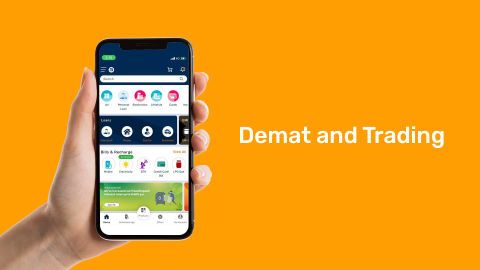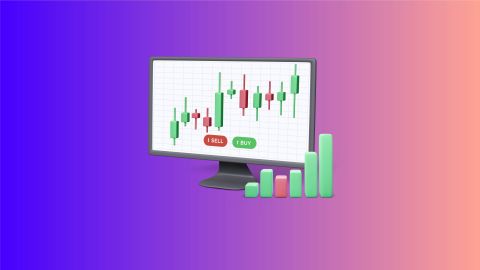You may have often heard the term "ledger balance" used in discussions regarding financial account transactions. As a record keeper for all the money coming in and going out of your Demat account, your ledger balance is an essential component of your financial journey. Understanding the meaning of ledger balance and its importance will benefit you by providing crucial information about your investment choices, spending patterns, and overall financial situation.
Let us explore how ledger balance functions and offer helpful advice for managing it. To give you a thorough understanding, we will also discuss the distinction between ledger balance and available balance.
What is ledger balance in Demat account
The ledger balance in a Demat account shows all transactions, including money and stock movements. It represents the total value of securities held electronically, such as shares, mutual funds, and bonds, giving a clear picture of the account’s worth. When you make stock market investments, your ledger balance dynamically updates to reflect the purchases and sales of shares. Each trade you make will impact the course of your investing journey. You can better understand how your decisions affect your overall financial health by seeing the ledger balance in action.
Significance of ledger balance
Understanding your ledger balance is important for various reasons.
- Portfolio management: Your ledger balance allows you to manage your investments and evaluate their success over time. Regularly monitoring your ledger balance provides insights into how your investing decisions affect your portfolio and allows you to analyse its health.
- Decision-making: Whether you are thinking about buying additional shares of a promising business or selling off underperforming ones, your ledger balance empowers you to make informed decisions.
- Financial planning: Understanding your ledger balance is also critical for financial planning. It helps you analyse the current state of your finances while setting goals for the future. Whether you are preparing for retirement, making a significant purchase, or establishing an emergency fund, your ledger balance is critical to determining your financial strategy.
How Demat ledger balance works?
After entering the four-digit TPIN, transactions are approved, and the bank or financial institution managing the Demat account records them in the ledger. This ledger tracks all debits and credits, including deposits, wire transfers, card transactions, and cheque clearances. The ledger balance, which updates at the start of the next business day, reflects the account balance by subtracting debits from credits. The account holder can access funds after the ledger is updated, although delays might occur due to exchange requirements or pending cheque deposits.
What constitutes a ledger balance
Your ledger balance is a summary of all your recent financial activities. It typically includes:
- Shares bought: This entry shows the number of shares you have purchased. When you buy shares, your ledger balance increases accordingly.
- Shares sold: When you sell shares, this entry reflects the decrease in your ledger balance. It subtracts the number of shares you have sold from your total.
- Dividends received: If you have received dividends from the companies whose shares you own, this entry adds those additional shares to your ledger balance.
- Bonus issues: Sometimes, companies might offer bonus shares to their shareholders. If you receive bonus shares, they are also included in your ledger balance.
- Corporate actions: Any other corporate actions, like stock splits or mergers, that affect your shares will also be recorded in your ledger balance.
Checking your ledger balance
After logging in, it's easy to check your ledger balance by going to the transaction history page on your Demat account. You may obtain a detailed summary of your financial transactions with just a few clicks, giving you the ability to stay informed and manage your finances optimally. Verifying your ledger balance is an essential step in efficiently managing your money, whether you are keeping an eye on your assets or making plans for your next financial move.
Ledger balance vs. available balance: Understanding the difference
It is essential to comprehend the distinction between ledger balance and available balance to properly manage your finances. Both phrases refer to your financial standing but have different meanings and offer unique perspectives on how well you are doing financially.
Let us examine the differences between available balance and ledger balance.
Ledger balance |
Available balance |
Represents all financial transactions within the Demat account |
Includes pending transactions and electronic transfers |
Provides a brief overview of financial health |
Offers hints about the future financial well-being |
Reflects previous financial transactions |
Indicates potential future funds availability |
Crucial to comprehend one's present fiscal situation |
Aids in planning for future financial obligations |
Updated based on completed transactions |
Adjusts based on pending and upcoming transactions |
Is it possible to have a negative ledger balance?
Yes, a negative ledger balance is possible in broker-cum-demat accounts when debits, like AMC charges, exceed the available balance in the trading account. In 3-in-1 accounts, insufficient bank funds can also result in a negative balance. If F&O trades incur unpaid MTM debits, this can further impact the ledger balance. In such cases, the broker may block new transactions, withdrawals, or crediting shares. Investors must monitor their ledger account closely to avoid negative balances and potential disruptions.
Conclusion
Understanding the meaning of ledger balance and its workings allows you to take stock of your current situation and confidently plan your financial future. Learning the specifics of ledger balance is crucial for attaining financial success and making informed trading decisions.




